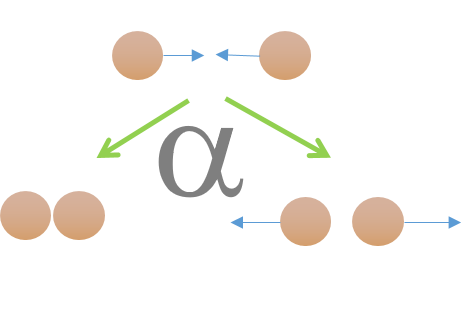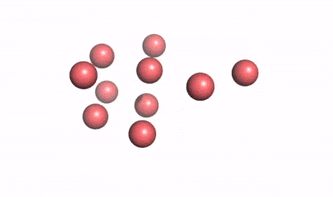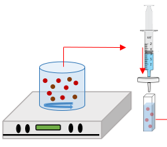Attachment efficiency
Attachment efficiency (\(\alpha\)) expresses the probability that upon collision of a particle with another surface or another particle, the two particles will stick to each other. In the case of favorable attachment, \(\alpha\) equals 1, i.e. all collisions are successful. This is the case e.g. when the particles are oppositely charged or when the ionic strength is relatively high. In most cases, however, \(\alpha\) < 1, e.g. because of dissolved organic matter adsorption leading to steric hindrance or charges on the particle surfaces resulting in electrostatic repulsion. Attachment efficiency, together with hydrodynamics, determines the attachment rates in porous media such as soils or sediments as well as the homoaggregation and heteroaggregation rates in rivers and wastewater treatment plants.
 |
Used for |
||
 |
 |
 |
|
| Attachment | Heteroaggreration | Homoaggregation | |
Algorithms |
Procedures |
| \(k_{att}=\alpha \frac{3(1-\theta)v}{2d_{c}}\eta _{0}\) | \(v=\alpha \beta n^{2}\) | \(v=\alpha \beta n_{A}n_{B}\) |  |
 |
 |
| Attachment rate calculation | Homoaggregation rate calculation | Heteroaggregation rate calculation | Batch test | Saturated column test | Unsaturated column test |
Read more |
Read also |
|
Consult the NanoFASE Library to see abstracts of these deliverable reports: NanoFASE Report D7.2 Soil property - NM fate relationships NanoFASE Report D8.1 Alignment between model requirements and experimental procedures |
Petosa, A. R.; Jaisi, D. P.; Quevedo, I. R.; Elimelech, M.; Tufenkji, N. Aggregation and Deposition of Engineered Nanomaterials in Aquatic Environments: Role of Physicochemical Interactions. Environ. Sci. Tech. 2010, 44 (17), 6532-6549. |
Contact

Geert Cornelis
Swedish University of Agricultural Sciences (SLU)
Email: geert.cornelis@slu.se
